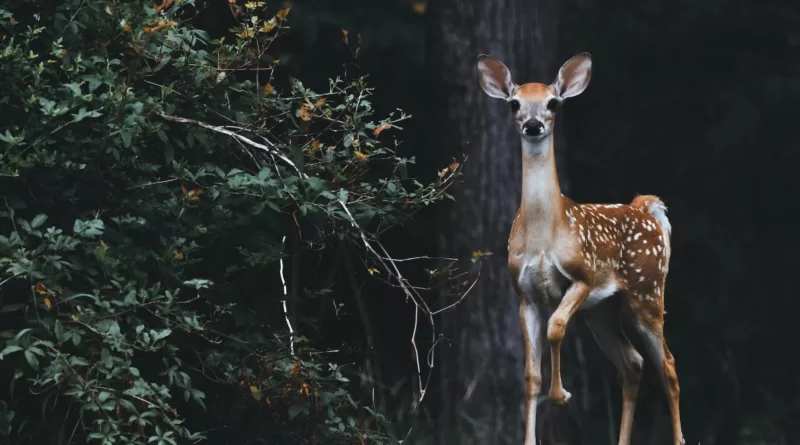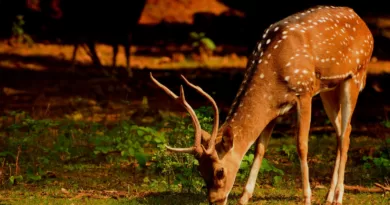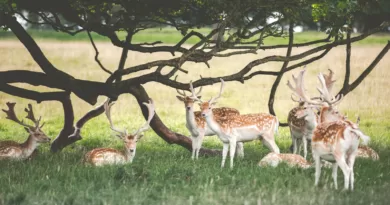Do Deer Eat Pears
Deer and Their Eating Habits
Deer, being herbivores, have a diverse diet that primarily consists of plant materials. They are known to be opportunistic feeders, adapting their eating habits according to the availability of food sources in their habitat. This allows them to have a varied diet throughout the year.
During the spring and summer months, deer mainly graze on succulent grasses, tender shoots, and young leaves. They also consume a variety of plants such as shrubs, flowers, and weeds. In the fall, as the availability of nutritious green plants decreases, deer shift their focus to mast crops like acorns, nuts, and fruits. This period is crucial for them to fatten up and store energy for the coming winter. While deer are primarily browsers, they can also resort to grazing on open fields when their usual food sources become scarce.
Different Types of Deer
Deer are a diverse group of animals, comprising different species and subspecies. The most common types of deer include the white-tailed deer, mule deer, elk, moose, and caribou. Each type of deer possesses distinct physical characteristics and inhabits specific regions across the world.
The white-tailed deer, for example, is known for its beautiful white tail, which often acts as a warning signal. This species is prevalent in North and South America, and it can adapt to various habitats, including forests, grasslands, and wetlands. On the other hand, the mule deer, named for its large ears, thrives in the western parts of North America and is well-adapted to the arid conditions of the region. Understanding the different types of deer is essential for studying their behaviors, habitats, and dietary preferences.
Understanding a Deer’s Diet
Deer, known for their graceful and elusive nature, have a diverse diet that varies depending on the season and available food sources. While they may feed on a wide range of vegetation, their primary feeding preference lies in consuming grasses, forbs, and browse. During warmer months, deer primarily graze on grasses, such as bluegrass and ryegrass, which provide them with essential nutrients and moisture. They also enjoy foraging on various forbs, including clover, dandelions, and broadleaf plants, which offer additional vitamins and minerals. In the colder months, when grasses become less abundant, deer shift their focus to browse, which includes leaves, buds, and twigs from trees and shrubs. By foraging on browse, they are able to meet their nutritional requirements and sustain themselves through the winter months.
In addition to grasses, forbs, and browse, deer also supplement their diet with fruits and nuts when available. Certain types of deer, such as the white-tailed deer, have a particular fondness for fruits like apples, acorns, and pears. These sweet and nutrient-rich treats provide an additional source of energy, vitamins, and minerals that contribute to their overall well-being. However, it is important to note that the consumption of fruits is not a significant portion of their diet, but rather a supplementary food source that they enjoy when it becomes accessible.
The Nutritional Value of Pears
Pears are not only delicious but also packed with essential nutrients. These sweet, juicy fruits are a good source of dietary fiber, vitamin C, and potassium. Fiber aids in digestion and helps to promote a healthy gut, while vitamin C is known for its role in supporting the immune system and collagen production. Additionally, the potassium content in pears can assist in maintaining healthy blood pressure levels.
Aside from their vitamin and mineral content, pears are also relatively low in calories, making them a healthy snack option. They are rich in antioxidants, which can help protect the body against cellular damage caused by harmful free radicals. These antioxidants, along with their high water content, make pears a hydrating choice for those looking to stay quenched throughout the day. Whether enjoyed fresh or incorporated into dishes, pears offer a nutritious addition to any diet.
Deer foraging: What Do They Look For?
Deer are selective foragers, constantly on the lookout for food sources that can meet their dietary needs. When foraging, they primarily search for plants that offer a combination of high nutritional value, taste, and safety. They have specific preferences for certain types of plants, such as fruits, nuts, and tender shoots, which provide the necessary nutrients for their survival and reproduction.
One crucial factor that influences deer foraging behavior is the availability of food in their habitat. They tend to choose areas with abundant vegetation, where they can find a variety of plants to satisfy their appetite. However, deer are also highly adaptable and can adjust their foraging patterns based on the season and the availability of different plant species. For example, during the summer, they may focus on grazing grasses and herbs, while in the fall, their attention turns to fruits and nuts that provide them with the energy required for the approaching winter.
• Deer primarily search for plants that offer high nutritional value, taste, and safety
• They have specific preferences for fruits, nuts, and tender shoots
• Availability of food in their habitat influences deer foraging behavior
• They choose areas with abundant vegetation to satisfy their appetite
• Deer can adjust their foraging patterns based on the season and availability of different plant species
• During summer, they focus on grazing grasses and herbs
• In fall, they turn to fruits and nuts for energy before winter
Identifying Signs of Deer Damage on Fruit Trees
Fruit trees can often fall victim to deer damage, as these graceful creatures are known to have a voracious appetite for the sweet rewards that can be found in orchards and gardens. Identifying signs of deer damage on fruit trees is crucial to understanding the extent of the problem and implementing effective solutions. One of the most common signs to look out for is the browse line, where deer have nibbled on the lower branches of the tree, stripping them of leaves and young twigs. This can hinder the overall growth and health of the tree, impacting its ability to produce a bountiful harvest. Additionally, deer tend to leave behind tell-tale hoof prints and droppings near the base of the tree, serving as clear indicators of their presence and potential damage.
Beyond the visible signs, it is important to be aware of other indirect indicators of deer damage. A tree that displays excessive branching in its lower portion, known as “brushy head,” can be a sign that deer have been repeatedly feeding on the tree over time. This branching pattern occurs as the tree tries to compensate for the loss of foliage caused by repeated browsing. Furthermore, an evaluation of the overall condition of the tree’s trunk and larger branches can help detect gnawing marks or rubbed bark, which are often caused by male deer during rutting season. Taking stock of these signs and understanding their implications is a crucial first step in protecting fruit trees from deer damage and preserving a thriving orchard.
The Role of Pears in a Deer’s Diet
Pears play a significant role in a deer’s diet, especially during certain seasons. These fruits are highly preferred by deer due to their high water content, which helps them stay hydrated. Pears are also a good source of natural sugars, providing the deer with a quick burst of energy. This makes them an attractive option for deer looking to replenish their resources after periods of physical exertion.
In addition to their hydrating and energizing properties, pears also offer essential nutrients to deer. They are rich in vitamins and minerals, including vitamin C, potassium, and fiber. These nutrients contribute to a deer’s overall health and well-being. The fibrous nature of pears aids in digestion and helps maintain a healthy digestive system in deer.
Overall, pears serve as a valuable food source for deer, meeting their dietary needs and providing the necessary sustenance for their survival. However, it’s important to note that while deer may enjoy eating pears, they have a diverse diet and rely on a variety of plant materials for nutrition. Therefore, pears should be viewed as just one component of their overall diet rather than the sole source of sustenance.
How Deer Impact Tree Growth and Fruit Production
Deer play a significant role in shaping tree growth and fruit production. When deer browse on young trees, it can significantly hinder their overall growth and development. The repeated nibbling on buds, shoots, and leaves can stunt the tree’s ability to thrive and reach its full potential. Moreover, deer can cause physical damage to trees by rubbing their antlers against the trunks, resulting in injured bark and weakened structural integrity.
In terms of fruit production, deer can have a detrimental impact on orchard trees. As they browse on fruit trees, they consume not only the leaves but also the developing buds and fruits. This can lead to reduced blossom set, resulting in fewer flowers and ultimately, fewer fruits. Additionally, the damage caused by deer can leave the trees more susceptible to diseases and pest infestations, further compromising their ability to produce a bountiful harvest. Understanding the extent of deer’s influence on both tree growth and fruit production is essential in implementing effective strategies to mitigate the damage and protect crops.
Strategies to Protect Pear Trees from Deer
One practical strategy to protect pear trees from deer is through the use of fencing. Erecting a sturdy fence around the perimeter of the orchard can effectively deter deer from accessing the trees. The fence should ideally be at least 8 feet tall to prevent the deer from jumping over, and the gaps between the fence posts should not exceed 8 inches to prevent the deer from squeezing through. Additionally, ensuring that the bottom of the fence is buried at least 12 inches into the ground can further deter deer from digging under the fence.
Another strategy to safeguard pear trees from deer is the use of deterrents. There are various types of deterrents available in the market, such as motion-activated sprinklers or lights, that can startle deer and discourage them from approaching the trees. Other options include placing products with strong odors, such as predator urine or human hair, near the trees to mask the scent of the pears and make them less desirable to the deer. Regularly changing the type of deterrents used can help prevent deer from becoming habituated to a specific method over time.
Alternative Food Sources for Deer
When deer’s natural food sources become scarce, they often rely on alternative food sources to sustain themselves. One common alternative food source for deer is agricultural crops. In search of nourishment, deer are known to venture into fields and gardens, feasting on crops such as corn, soybeans, and alfalfa. Farmers and gardeners sometimes face challenges when trying to protect their crops from deer foraging, as these animals can cause significant damage to the plants. Additionally, deer are attracted to fruit-bearing trees and bushes, including apple and pear orchards. This can be problematic for farmers who rely on these trees for their livelihood, as deer can not only consume the fruits but also damage the trees by rubbing their antlers against them.
What do deer typically eat?
Deer typically feed on a variety of vegetation, including grass, leaves, shoots, and twigs.
Are there different types of deer?
Yes, there are different types of deer, such as white-tailed deer, mule deer, elk, and moose, each with their own dietary preferences.
How can I understand a deer’s diet?
Understanding a deer’s diet involves studying their eating habits and preferences, as well as identifying the nutritional value of different food sources.
What is the nutritional value of pears for deer?
Pears are rich in carbohydrates, fiber, and water, providing essential nutrients for deer to stay healthy.
What do deer look for when foraging?
When foraging, deer look for food sources that are easily accessible, have high nutritional value, and are safe from predators.
How can I identify signs of deer damage on fruit trees?
Signs of deer damage on fruit trees may include stripped bark, broken branches, and missing foliage or fruit.
What role do pears play in a deer’s diet?
Pears can serve as a valuable food source for deer, providing them with hydration, energy, and essential nutrients.
How do deer impact tree growth and fruit production?
Deer can negatively impact tree growth and fruit production by browsing on young trees, damaging bark, and consuming foliage and fruit.
What strategies can I use to protect pear trees from deer?
Strategies to protect pear trees from deer may include installing fences, using repellents, planting deer-resistant plants nearby, or employing scare tactics.
Are there alternative food sources for deer?
Yes, there are alternative food sources for deer, such as acorns, berries, grasses, agricultural crops, and other types of vegetation.




